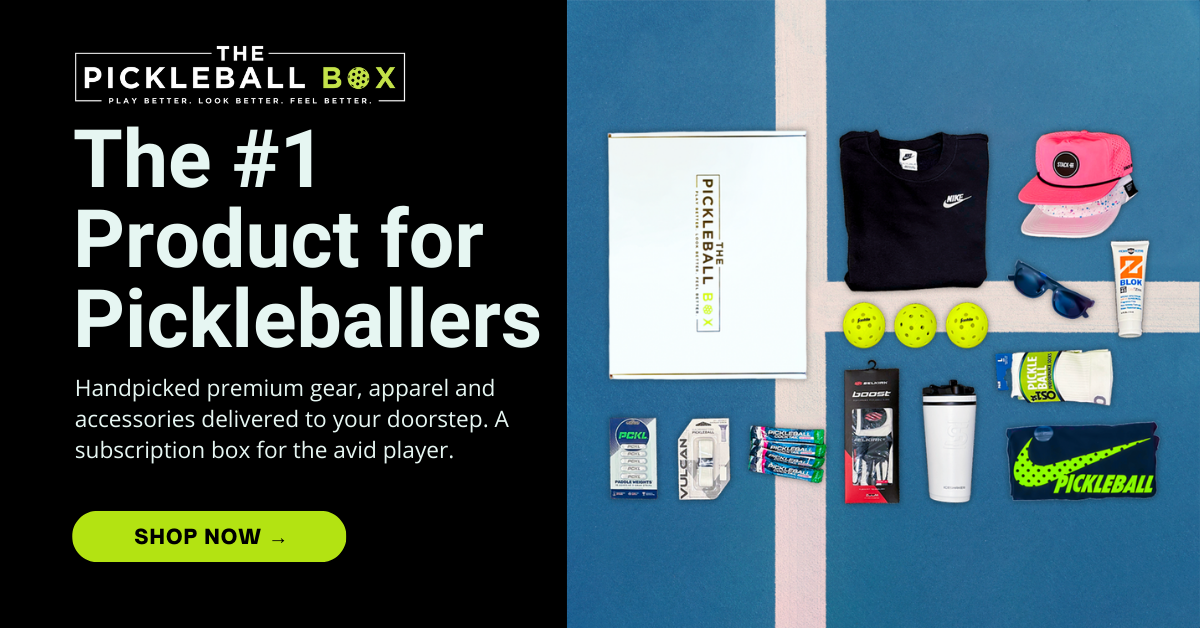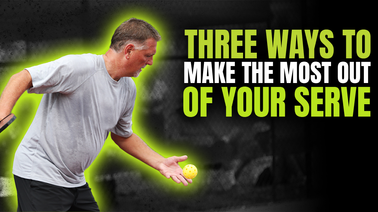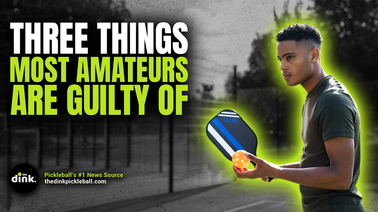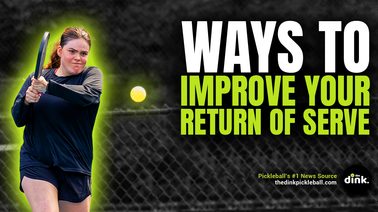
No matter the level of pickleball, to win consistently, you must apply pressure to your opponents.
This doesn’t mean hitting the ball hard on every shot. Instead, think of pressure as putting balls into spots where your opponent can’t hurt you.
Sign up today for the most informative newsletter in pickleball from The Dink!
We'll discuss three pressure points you can set your sights on to win more pickleball matches.
Pressure Point No. 1 - The “Un” Ready Position
An athletic position is knees slightly bent, chest up, and paddle out in front of your body. It’s quite astonishing how many pickleball players don’t play in this position. Not only does it put them at a disadvantage once the ball starts flying around, but it can also cause serious injuries when they reach, lunge, or turn their body.
If your opponent stands too tall
It’s challenging to reach down and hit the ball softly when someone is standing too tall. Players who do this have a tendency to pop the ball up more.
All you really have to do is hit the ball down at their feet, and you should get plenty of easy putaways throughout the match. Do this by dropping your thirds at their inside foot and executing good soft dinks when at the kitchen line.
If your opponent holds their paddle too low or shows backhand
Many players make the mistake of holding their paddle at hip level or showing their backhand as they wait for the next shot. If your opponent’s paddle is low, aim speedups at their chest. The sudden raising of their paddle will likely cause them to pop the ball up back to you or out of play.

For $50 off your first Pickleball Box, use code Dink50.
If they’re showing backhand, aim for their dominant-side hip or elbow.
The chances of them being able to get a forehand on the ball is minimal, and they are more likely going to chicken wing it instead.
Either of these scenarios can cause a weak return and put you in a favorable position on the next ball.
Pressure Point No. 2 - Backhand or Forehand Troubles
It’s rare to find a recreational player with an equally strong forehand and backhand. It’s much more likely they are weaker on one side. Early in a match, find which hand they prefer by hitting it to that side of their body.
For example, if you’re playing against a righty, place your ball on the right side of their body to test their forehand and to the left side to test their backhand.
How to check their backhand
The easiest time to check their backhand is during the return of serve. Aim your return to the non-dominant side of their body and see what they do with it. If it’s weak or they run around it to their forehand, you know they aren’t very comfortable with the ball going that way. It’s probably a great spot to keep going to on returns, serves, and even while dinking.
How to check their forehand
To test their forehand, try a speedup right at it. Do they slide their body out of the way to make good contact, or is their return lacking? If it’s weak, you have a pressure point to keep aiming at.
Pressure Point No. 3 - Lazy Footwork
“If you reach, I teach.” Perhaps the easiest way to test someone’s footwork is to move them around while dinking. Aim for the outside of their right foot, then the inside of their left foot.
Stretch them to the sideline and then back to the middle. Are they moving their feet or simply reaching their arm out to the ball? If it’s the latter, then you can expect some popups to come your way.
Another good test is the lob. When all four players are at the kitchen line, place a lob over their heads and see how they respond to it.
If they simply raise their arm and flail at it or properly turn and run backward, you now have enough information to know whether that is a good approach against them.
Even if it’s bad, they’ll respond to it in someway.
Also, if it pisses them off that you lobbed the ball, do it more.
Bonus Pressure Point - Lack of Mobility
This one is a bit unfair, but it’s a pressure point nonetheless. No one wants to be the person who picks on the immobile player, but if you’re playing to win, then you press whatever points you can to do so.
If your opponent can’t run or stays at the baseline a little too long, then you should move the ball up, down, left, and right against them. Lobs are in play. Drop shots are in play. Roll volleys to their non-dominant side.
Chances are they won’t be able to get to the ball, but even if they do, the return will be weak and provide an easy putaway for you and your partner.
Learn Early, Win Late
Ultimately, the goal of finding pressure points is to determine what you can do to win the match. This is how pickleball strategies are built. It’s easy to find the weakest player on the court and keep hitting the ball to them.
That’s also lazy and won’t always work. Instead, figure out which shots each of your opponents might struggle with early on and exploit those weaknesses over and over again to win the match.
If you want to know your own pressure points, consider which shots your opponents repeatedly hit at you.
Jason Flamm
Love Pickleball? Join 100k+ readers for free weekly tips, news & gear deals.
Subscribe to The DinkGet 15% off pickleball gear at Midwest Raquet Sports









